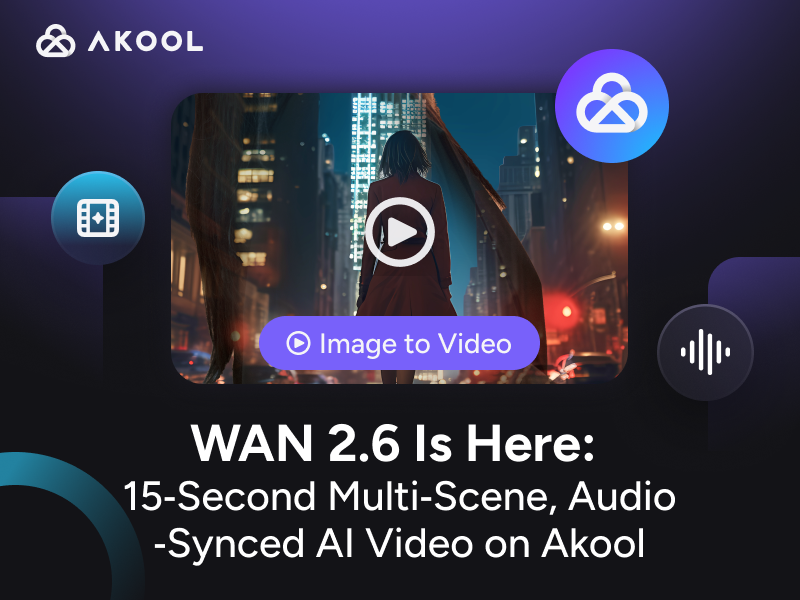Introduction to Speech-to-Text (STT)
Speech-to-Text (STT) technology is a tool that converts spoken language into written text. With the help of algorithms and machine learning, STT systems recognize speech patterns and transcribe them accurately. This technology is crucial in voice-controlled applications and automated transcription, enhancing content creation by enabling faster text generation. Key performance metrics include Word Error Rate (WER) for measuring accuracy, and real-time processing capabilities, which help creators transform audio content into actionable text efficiently.
How to Use Speech-to-Text (STT)
Speech-to-Text (STT) technology can significantly enhance your creative processes by converting spoken words into written text. Here's a quick guide on how to effectively use STT:
Understand the Basics
- Definition: STT technology transcribes spoken language into text using advanced algorithms and machine learning models.
- Capabilities: It supports real-time transcription, handles various languages, and can be integrated into applications for diverse uses such as subtitles, transcription, and accessibility.
Choose the Right Tool
- Popular Options: Consider tools like Google Speech-to-Text, IBM Watson, or Microsoft Azure, each offering unique features like language support and integration capabilities.
- Evaluate Needs: Decide based on your specific requirements, such as accuracy, cost, and ease of use.
Set Up and Configure
- Installation: Follow the tool's installation guidelines, which may involve downloading software or accessing an online platform.
- Configuration: Customize settings for language, dialect, and input sources to ensure optimal performance.
Input Audio
- Quality Matters: Use high-quality audio recordings to improve transcription accuracy. Minimize background noise and ensure clear speech.
- Formats: Ensure your audio files are in compatible formats (e.g., WAV, FLAC).
Process and Review
- Start Transcription: Initiate the transcription process through the tool’s interface. Many tools offer real-time processing for immediate results.
- Review and Edit: After transcription, review the text for errors. Most STT tools allow you to edit directly in their interface.
Export and Utilize
- Export Options: Save your transcription in preferred formats like TXT, DOC, or PDF for easy sharing and storage.
- Integration: Use the transcribed text in your creative projects, such as video captions, blog content, or research analysis.
Monitor Performance
- Accuracy Metrics: Keep track of performance metrics such as Word Error Rate (WER) to assess and improve transcription accuracy.
- Feedback Loop: Regularly review and update configurations based on feedback and new requirements to enhance efficiency and accuracy.
By following these steps, you can leverage Speech-to-Text technology to streamline your creative workflows and boost productivity.
Applications of Speech-to-Text (STT)
Speech-to-Text (STT) technology is transforming various creative and business processes. Here are some key applications:
Content Creation: Streamline video and podcast production by transcribing spoken content for subtitles and transcripts.
Market Research: Convert focus group discussions and interviews into text for easier analysis.
Accessibility: Enhance accessibility by providing real-time captions for live events and online content.
Customer Service: Automate call center operations by transcribing calls for quality assurance and training.
Note-taking: Assist professionals and students by transcribing lectures and meetings into written notes.
Popular STT tools like Google Speech-to-Text, IBM Watson, and Microsoft Azure are widely used across industries for these applications.
Application Examples Table
| Application | Usage Example |
|---|---|
| Content Creation | Transcribing podcasts for text-based content |
| Market Research | Analyzing interview transcripts |
| Accessibility | Providing captions for live events |
| Customer Service | Transcribing customer calls for analysis |
| Note-taking | Converting lecture audio into written notes |
Technical Insights into Speech-to-Text (STT)
Core Components
- Acoustic Model: Analyzes the audio signals to identify phonemes, the smallest sound units in speech.
- Language Model: Predicts word sequences by understanding linguistic context, enhancing transcription accuracy.
- Decoder: Combines outputs from acoustic and language models to produce coherent text.
Algorithms and Machine Learning
- Hidden Markov Models (HMMs): Used to model time series data, critical in recognizing sequential patterns in speech.
- Deep Neural Networks (DNNs): Improve pattern recognition by leveraging large datasets for training, boosting accuracy.
- End-to-End Systems: Simplify processes by directly mapping audio inputs to text outputs, reducing error rates.
Performance Metrics
- Word Error Rate (WER): A standard metric to evaluate transcription accuracy, calculated as the percentage of substituted, inserted, and deleted words.
- Real-Time Processing: The ability to transcribe speech as it happens, crucial for applications requiring immediate feedback.
System Challenges
- Accents and Dialects: Variability in speech can impact STT accuracy, necessitating robust training datasets.
- Background Noise: Requires advanced noise-cancellation techniques to maintain transcription quality in diverse environments.
Performance Metrics Table
| Metric | Description |
|---|---|
| Word Error Rate | Measures transcription accuracy by error percentage |
| Real-Time Processing | Ability to transcribe speech in real-time |
Useful Statistics on Speech-to-Text (STT)
In the rapidly evolving landscape of Speech-to-Text (STT) technology, understanding current statistics can provide valuable insights for creators, developers, and creative agencies. Here are some pertinent statistics and their implications:
- Market Growth: The global Speech-to-Text market was valued at approximately USD 2.3 billion in 2022 and is projected to grow at a compound annual growth rate (CAGR) of 14.5% from 2023 to 2030.
Implication: This growth indicates a rising demand for STT solutions across various industries, highlighting the opportunity for developers and creative agencies to innovate and integrate STT capabilities into their products and services.
Accuracy Improvements: Recent advancements have increased STT accuracy rates to around 95% in 2023, with some solutions achieving even higher precision in controlled environments.
Implication: Higher accuracy rates reduce the need for manual correction, streamlining workflows for creators and developers, and enhancing user satisfaction in applications that rely on speech recognition.
Adoption in Enterprises: As of 2023, approximately 68% of enterprises report using STT technology in some capacity, either for customer service, transcription, or other business operations.
Implication: This statistic underscores the widespread acceptance and reliance on STT technology in professional settings, encouraging creative agencies to consider STT integration to meet client demands and improve operational efficiency.
Language Support Expansion: Major STT providers have expanded their language support, now offering transcription in over 120 languages and dialects.
- Implication: This extensive language support opens new markets for global applications, allowing creators and developers to reach a broader audience and cater to diverse linguistic needs.
These statistics not only highlight the growth and advancements in the STT field but also emphasize the strategic opportunities available for those looking to leverage this technology in their projects.
Frequently Asked Questions about Speech-to-Text (STT) AI Service
How accurate is the Speech-to-Text AI service?
Our Speech-to-Text AI service boasts high accuracy rates, thanks to advanced machine learning algorithms and continuous updates. Accuracy can vary depending on audio quality and language.
What languages does the Speech-to-Text service support?
Our service supports multiple languages and dialects, including English, Spanish, Mandarin, and more. We are continually expanding our language offerings to meet global needs.
Can the Speech-to-Text service handle different accents?
Yes, the AI is trained on a wide range of accents and dialects, improving its ability to accurately transcribe diverse speech patterns.
Is the Speech-to-Text service suitable for real-time transcription?
Absolutely, our service is optimized for real-time transcription, making it ideal for live events, webinars, and meetings.
How does the Speech-to-Text AI handle background noise?
Our STT service includes noise-cancellation features to minimize the impact of background noise, ensuring clearer transcriptions.
What formats are supported for audio input in the Speech-to-Text service?
We support a variety of audio file formats, including MP3, WAV, and FLAC, providing flexibility for different user needs.
How secure is the data processed by the Speech-to-Text service?
Data security is a top priority. Our service uses encryption protocols to protect your data during processing and storage, ensuring privacy and compliance with industry standards.
Can the Speech-to-Text service be integrated with other applications?
Yes, our STT service offers API access, allowing seamless integration with various applications and platforms for enhanced functionality.




